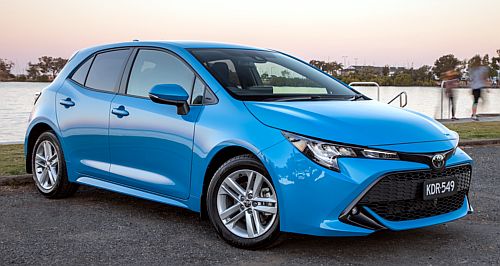Market Insight: Shuffling small-car segment

IT IS no secret that small-car sales are sliding, primarily as consumers opt for the more trendy SUV segment that is increasingly intruding on hatchback territory.
Manufacturers of small cars are also making small SUVs, so the battleground for business can occur on a single brand’s showroom floor, rather than between rival car-makers.
In the weight of the move to SUVs, some car-makers have abandoned the small-car segment altogether – note Ford dropping the Focus, the demise of the Nissan Pulsar and Mitsubishi Lancer, the closure of Holden and the retirement of segment examples from brands such as Fiat.
In 2008 there were 26 models in the sub-$40,000 small passenger car bracket. In 2022 there are 14.
SUVs were stretching their potential, with 22 models in what used to be a broad compact SUV segment – that has since spawned light, small and medium categories – including the Honda CR-V, Toyota RAV4 and Nissan X-Trail that today all compete in the latter.
In 2008, 85,597 units were sold in this segment compared with the 220,709 sales in the sub-$40,000 small-car category.
Today, the respective sales are (year-to-date) 130,861 sub-$40,000 small SUVs and 82,103 small passenger cars.
Since 2008 the effect of time, new rivals and the growing SUV sector has nibbled at the small-segment leader Corolla, diluting its sales from 47,901 units in 2008 to 28,768 in 2021 (and estimated at 23,650 units for the 2022 calendar year) – a drop of 51 per cent.
Toyota, of course, barely noticed the fall off as it expanded its SUV product line-up in the light and small SUV segments.
In the same 14-year period, Volkswagen’s once-strong grip on the European offerings plunged 75 per cent, partially on the trend away from small cars toward small SUVs that are little more than jacked-up hatchbacks) and also the effect of production slowdowns rampant across the industry since the pandemic and particularly affecting European OEMs.
Volkswagen happily now fills in for the Golf with its T-Cross, T-Roc and Tiguan SUVs.
At the same time, there has been significant interest in the Hyundai i30 and Kia Cerato with sales up in the 14-year period by 100 per cent (Hyundai) and nine-fold for the Kia.
It took the i30 from a market share of 5.3 per cent in 2008 to 27.1 per cent (year-to-date), just under the Corolla that in 2008 had a 21.7 per cent stake in the small-car segment to its current year-to-date share of 31.7 per cent.
The Cerato’s share started out at a paltry 0.8 per cent 14 years ago but now is 16.3 per cent YTD, well above one of the segment’s darlings, the longstanding Mazda3.
Like the Volkswagen Golf, Mazda has seen its small hatch and sedan slide on the impact of fresh rivals and the trend to SUVs. In 2008 its market share was 15.3 per cent and it is now 11.4 per cent.
The other notable player in the small-car segment over the past 14 years has been the Subaru Impreza and like the Mazda and Volkswagen, its sales have slipped, especially since the high of 14,517 units sold in 2017.
It is now on track to sell just over 5000 units (Impreza and WRX combined) this calendar year for a market share of 6.4 per cent, above the 5.3 per cent stake it held in 2008 but well down in sales numbers on that year’s 11,607 units delivered.
One model that had been popular over the past decade was the Ford Focus. It had a market share of 7.7 per cent in 2012 and 2013, beating the Golf, but languished in following years and 2022 is the last year for the remaining variant, the ST.
The small-car market leader remains the Toyota Corolla (23,441 sales for the first 11 months of 2022) with second place to the Hyundai i30 (not far off at 20,014 units to date) and Kia Cerato (12,016) and Mazda3 (8445).